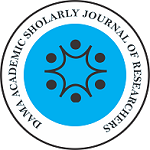Authors: Jones Osei1, Peter Kwasi Sarpong2, Samuel Amoako3
Mathematics Department, Kwame Nkrumah University of Sciene & Technology
email: oseijones2013@gmail.com, kp.sarp@yahoo.co.uk, Samkamoako2016@gmail.com
Abstract
Since the publication of JP Morgan’s Risk Metrics in 1994 there has been an explosion in the research in the areas of value of risk and risk management in general. While the fundamental ideas encompassing VaR are founded in the area of market risk measurement they have been reached out throughout the most recent decade, to different territories of risk management. Specifically, VaR models are presently usually used to gauge both credit and operational risks. In any case, with different methods and models, the decision that VaR users face is the decision of selecting the proper procedure that is generally suitable. The strategies ought to make gauges that fit the normal conveyance of returns. On the off chance that VaR is overestimated, the administrators winds up overestimating the danger. This, in any case, could bring about the holding of great measures of cash to cover misfortunes as for the situation with banks under the Basel II accord, (Basle Committee on Banking Supervision, 1996). The same goes for the inverse occasion, when VaR has been thought little of bringing about inability to cover acquired losses. This study seeks to compare two different methods to calculating VaR namely Historical Simulation and Monte Carlo Simulation. The method will be applied on six different equities on the Ghana Stock Exchange Market with two different confidence level of 95% and 99%.
Keywords: VaR, Historical Simulation and Monte Carlo Simulation

